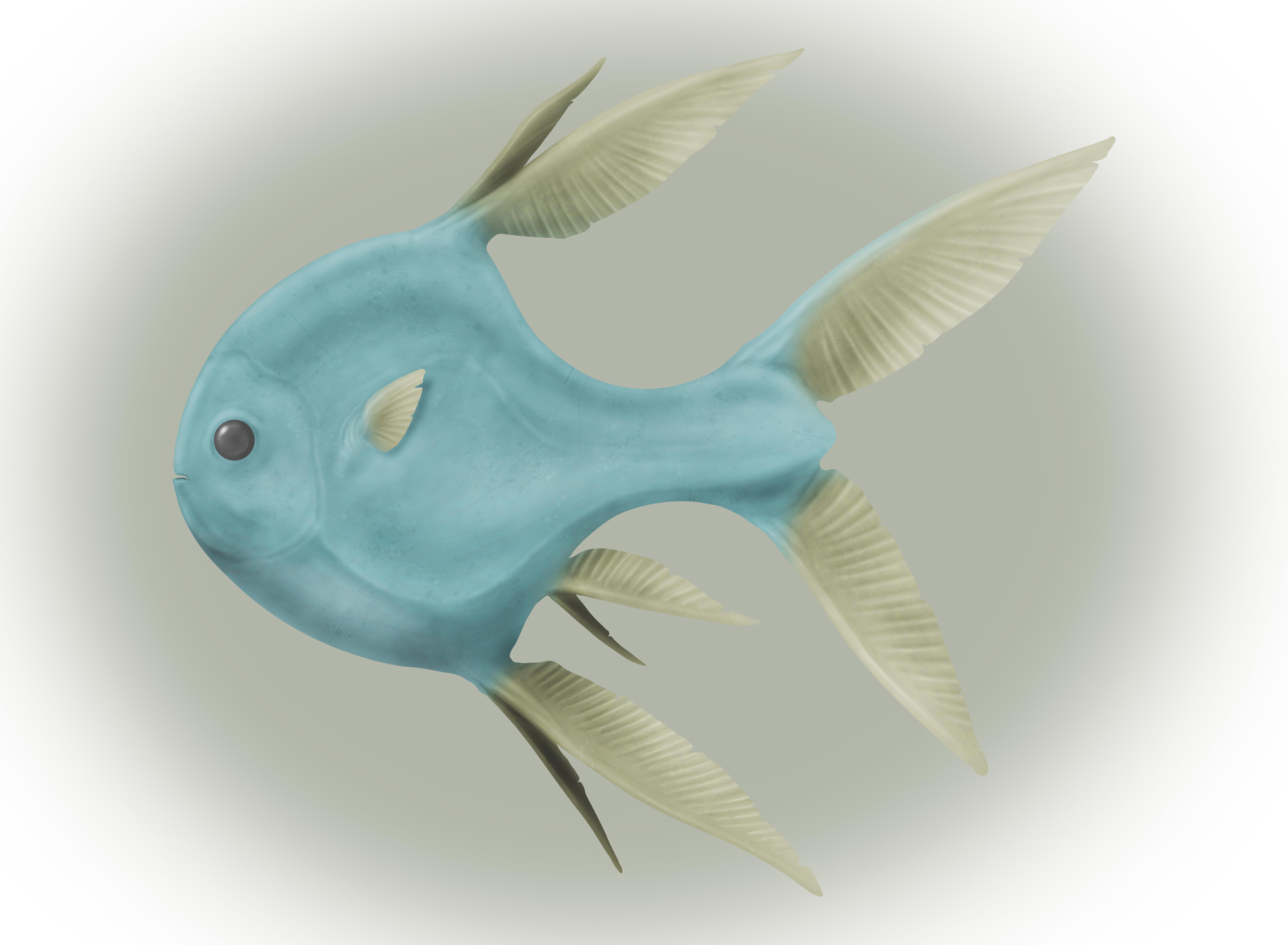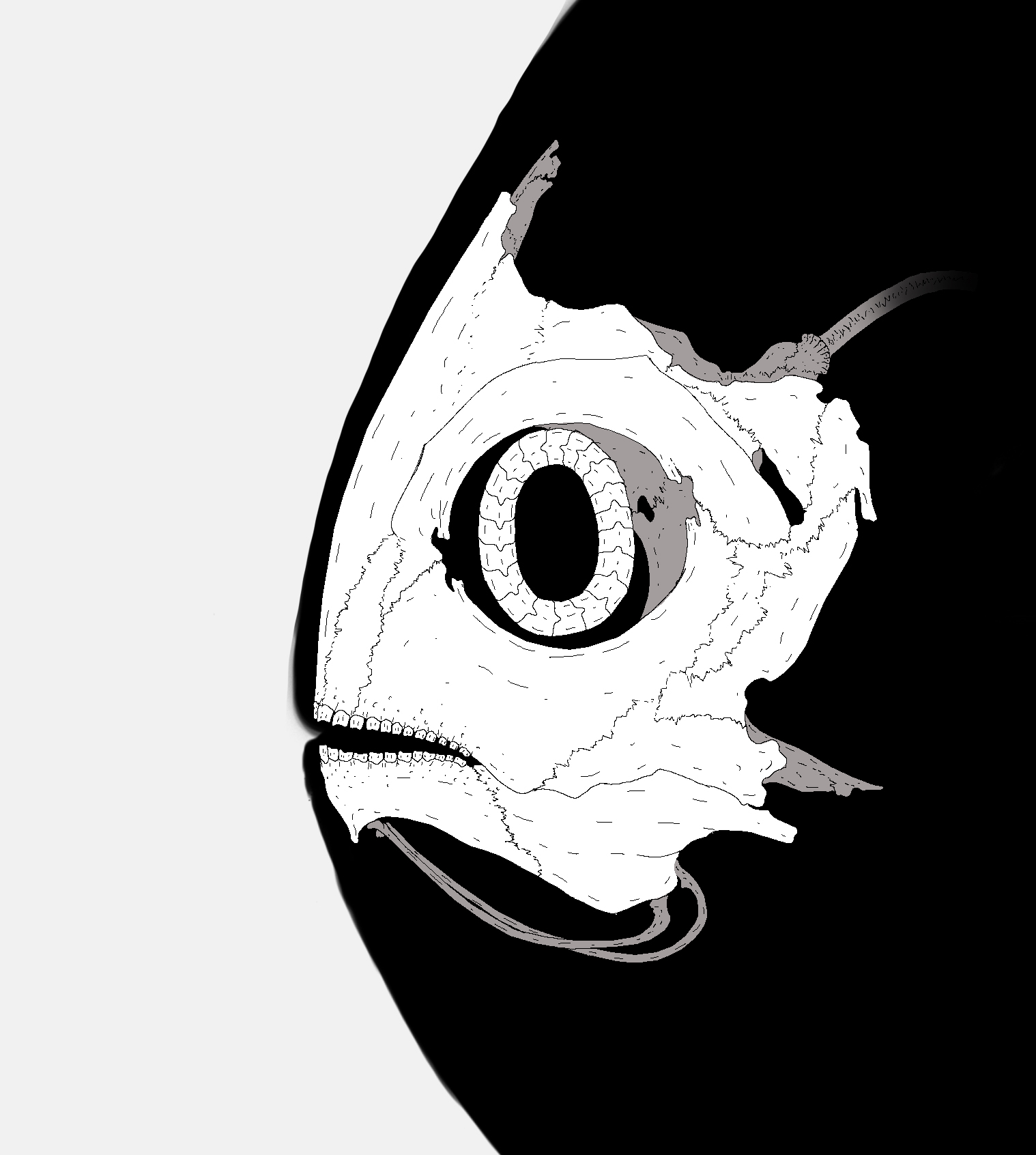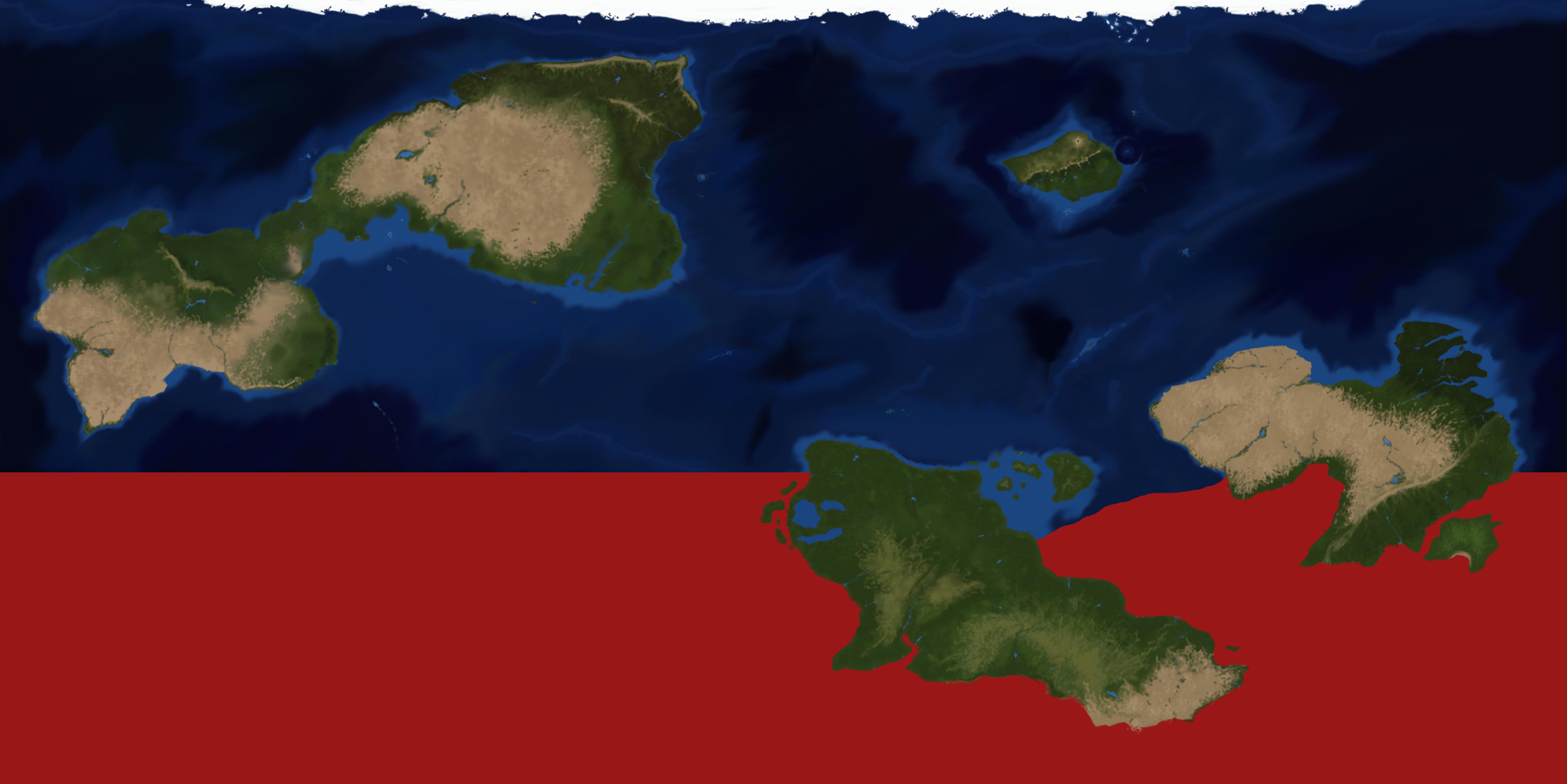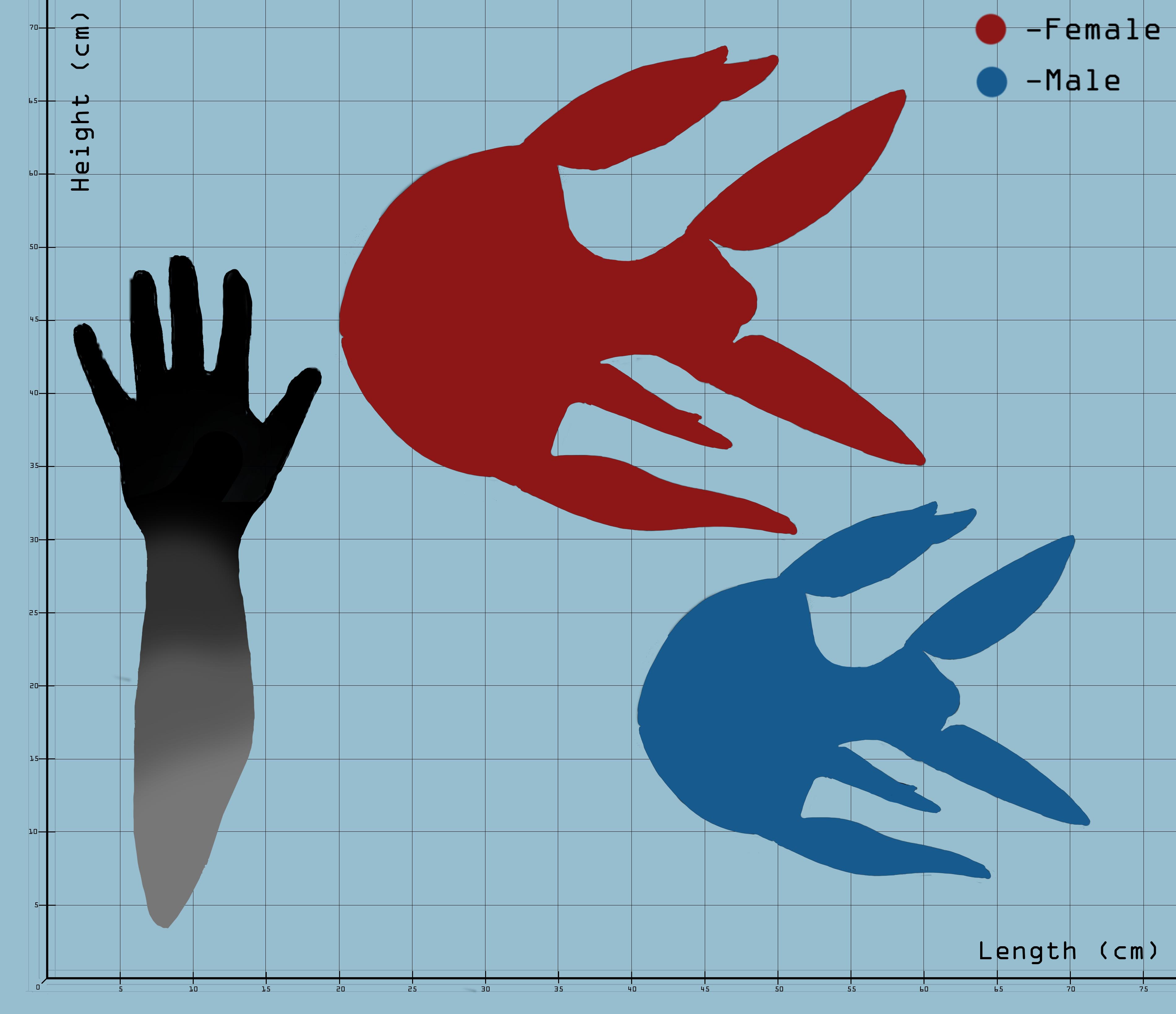Common Flapper
Esavelis comunis are medium sized amphibians that inhabit the southern oceans.
usually preyed upon by Kugawas, these little critters move in large shoals around the pelagic environments, constantly seeking food to sustain their fast metabolism.
when in danger, the shoal will scatter everywhere, surrounding the predator; their skin, reflecting the sun’s light and directed by the formation they've taken, will blind and drive away the threat: this defence mechanism, however, doesn't work against predators with poor eyesight, such as the Pelagic Doublejaw Kugawa , that will have little problems hunting them.
these animals are common to find on many restaurants' menus due to their abundance in the sea and soft and tasty meat.
Common Flappers are also usually kept in various aquariums thanks to their graceful in movements and social behavior.
Basic Information
Anatomy
- Cranium high and rounded; eyes black taking up most of the cranial space.
- Body semicircular; Spines II to IV pointing dorsally forming the dorsal arch.
- Spines from V to VII pointing ventrally forming the abdominal arch.
- Visible drop from from the chest to the start of the Gill tail.
- Gill tail short; Gill fan with average caudal drop and ridge height.
- Pectoral fins atrophied and rounded; Dorsal fin coupled and elongated, at the edge of the dorsal arch.
- Anal I on the edge of the abdominal arch, Anal II positioned near the base of the Gill tail.
- Presence of caudal fins.
Genetics and Reproduction
Polygamous.
Mating seasons every two months.
Males will enter an active state for two weeks with the swelling of the parapenial sac and of the Filtration sac; during this phase, like in most other Selenopiscoidea, the parapenis will be to swollen to retract inside the sac.
Females will enter an active state for three weeks with abundant mucous production in the Egg ducts, leading to leakings; females will have brighter marking on the Gill tail during this period.
the animals will mate only in the shade of floating forests; males and females will mate chaotically with eachother with no apparent order on who goes first.
Mating rituals are kept to a minimum; copulation takes five minutes to come to conclusion.
The females will incubate the eggs in the ducts for four days and will lay twenty to fourty eggs each.
The eggs are laid along the trunks of the floating forest's algae; the shoal then abandons the eggs.
The eggs hatch after twenty days and the spawns will find shelter between the forest's leaves, feeding on Phytoplankton.
Growth Rate & Stages
Ontogenesis in the spawns not incredibly marked.
Loss of the natal aculeus at two weeks of age.
Ecology and Habitats
They are Epipelagic, living between 5 to 120 m deep.
they wander the open seas and traverse thousands of km of open waters in a year.
Dietary Needs and Habits
Esavelis comunis is an omnivorous species, feeding on plants from floating forests and oceanic bushes and on small invertebrates they find on said plants.
This last food source is more occasional than needed by the animal but they are a big enough part of their diet to become relevant when talking about it.
Biological Cycle
Esavelis comunis will live for the first two months of life inside the floating forest they were born in.
For the first few weeks of life they will feed only on Phytoplankton; they will start to feed on buds and young leaves after that.
Two months after their birth they'll be ready to depart the forest with the shoal coming in to reproduce for the season.
They'll be ready to mate for the next season.
Additional Information
Social Structure
Very social species.
Esavelis comunis lives in enormous shoals of thousands of specimens.
The shoal has no complex social structure but offers protection.
They will blind predators by circling them and reflecting sunlight against the aggressor's eyes.
Domestication
One of the most popular aquarium animals on the market.
Many morphs are available to purchase.
Most popular are Algae green and Blue strike.
Its elegant movements in water and high energy makes them a household favorite for many people searching for an animal to keep at home that doesn't require too much attention.
Uses, Products & Exploitation
Popular in sothern cuisine for the soft and tasty meat; this extremely common species is of economic significance for many fishing industries in the south.
Of great importance in the pet trade due to its popularity.
Geographic Origin and Distribution
Perception and Sensory Capabilities
This species relies on sight and on chemical receptivity.
Symbiotic and Parasitic organisms
Afflicted by Intestinal Tube Worms.
Sometimes seen with leeching parasites attached to the respiratory tract.
Scientific Name
Eoichthyia, Tartarosomnia, Rotunducephalidae; Gladiopinnoidea; Quadratocephaloidea; Selenopiscoidea ; Esavelidae; Esavelis; E. comunis
Lifespan
8 years
Conservation Status
LEAST CONCERN: No measures underway to protect this species.
Population trend: STABLE
Average Weight
200 to 500 gr
Body Tint, Colouring and Marking
Body ranging from a strong azure to grey.
darker ring around the eye, striping along the Gill tail.
Remove these ads. Join the Worldbuilders Guild













Comments